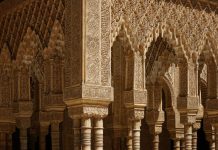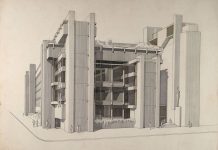There are hardly any general works devoted to architecture on a pan-European scale. Even Pevsner’s book, contrary to its name, cannot be recognized as such. Nevertheless, several projects have been created that betray the pan-European ambitions of their authors or their desire to turn to unexplored areas of architectural history of recent times.
Let’s take as an example a series of eight books related to exhibitions held by the Deutsches Architekturmuseum (DAM, German Museum of Architecture) in Frankfurt: Architektur im 20. Jahrhundert – “Architecture of the XX century”. The eight parts of the series were released between 1995 and 2000 and relate respectively to Austria, Ireland, Portugal, Sweden, Switzerland, Greece, Finland and Germany (all of these countries, with the exception of Germany and Switzerland, have relatively recently become EU members).
The importance of publications devoted to Ireland, Portugal and Greece for European historiography is especially great, since the architecture of these countries is the least studied in an international perspective. The book “Architecture of the twentieth century in Spain”, published at the end of 2000 for another exhibition at DAM, was not included in the series, but it undoubtedly fits into its theme. It is safe to say that Wilfrid Wang, who took part in the creation of all nine books, played a key role in the discovery of the architecture of Europe.
As for the architecture of Central Europe, exhibition catalogues published since 2000 by Adolf Stiller have made a very important contribution to its study. Stiller became a pioneer in representing countries that were usually given a marginal place or no place at all in the history of European architecture. Stiller’s series includes publications devoted to the architecture of the twentieth century in Slovakia, Romania, Croatia, Bulgaria, Slovenia and Poland, as well as catalogs for Finland, which have already appeared in many publications in different countries, and for Luxembourg, which, like Bulgaria, attracted little attention internationally before the appearance of this series. Attention in all these publications is focused on modern architecture, but they represent valuable and previously inaccessible material.
To date, Wang and Stiller have given the architectural world a total of sixteen national reviews, which, due to their sequence and serial format, facilitate the comparison of the ways of architecture development in half of the European countries, and therefore, taken together, make up a national network.



















